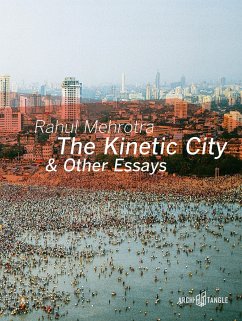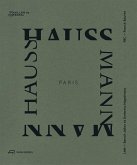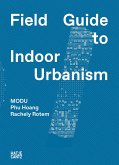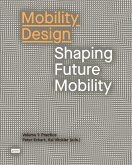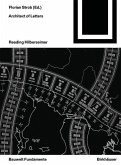This book presents Rahul Mehrotra's writings over the last thirty years and illustrates his long-term engagement with and analysis of urbanism in India. This work has given rise to a new conceptualization of the city. Mehrotra calls it the Kinetic City, which is the counterpoint to the Static City, as familiar to most of us from conventional city maps. He argues that the city should instead be perceived, read, and mapped in terms of patterns of occupation and associative values attributed to space. The framework is established in this publication by Rahul Mehrotra's anchor essay, which draws out its potential to "allow a better understanding of the blurred lines of contemporary urbanism and the changing roles of people and spaces in urban society."
The emerging urban Indian condition, of which the Kinetic City is symbolic, is examined in this publication through a selection of writings curated by Mehrotra, which led to and then subsequently built on this framework. The theory is reinforced by different perspectives that Rahul Mehrotra brings to bear on discourse, and on the profession of architects and urban designers, thanks to his career as an architect, urban designer, conservationist, educator, and advocate for the city. From essays such as "Evolution, Involution and the City's Future: A Perspective on Bombay's Urban Form" to more generally applicable ruminations such as "Our Home in the World," this book offers an in-depth look at the last thirty years of reflection and theorizing behind Mehrotra's work.
The publication is divided into three parts. The anchor essay, "Negotiating the Static and Kinetic Cities," and other contributions (twenty-one in total) make up the main section. A second book within the book is dedicated to an expansive complimentary photo essay by the photographer Rajesh Vora, illustrating the key themes transaction, instability, spectacle, and habitation. The last section presents an illustrated bibliography ofRahul Mehrotra's wide range of research and writings.
The emerging urban Indian condition, of which the Kinetic City is symbolic, is examined in this publication through a selection of writings curated by Mehrotra, which led to and then subsequently built on this framework. The theory is reinforced by different perspectives that Rahul Mehrotra brings to bear on discourse, and on the profession of architects and urban designers, thanks to his career as an architect, urban designer, conservationist, educator, and advocate for the city. From essays such as "Evolution, Involution and the City's Future: A Perspective on Bombay's Urban Form" to more generally applicable ruminations such as "Our Home in the World," this book offers an in-depth look at the last thirty years of reflection and theorizing behind Mehrotra's work.
The publication is divided into three parts. The anchor essay, "Negotiating the Static and Kinetic Cities," and other contributions (twenty-one in total) make up the main section. A second book within the book is dedicated to an expansive complimentary photo essay by the photographer Rajesh Vora, illustrating the key themes transaction, instability, spectacle, and habitation. The last section presents an illustrated bibliography ofRahul Mehrotra's wide range of research and writings.

